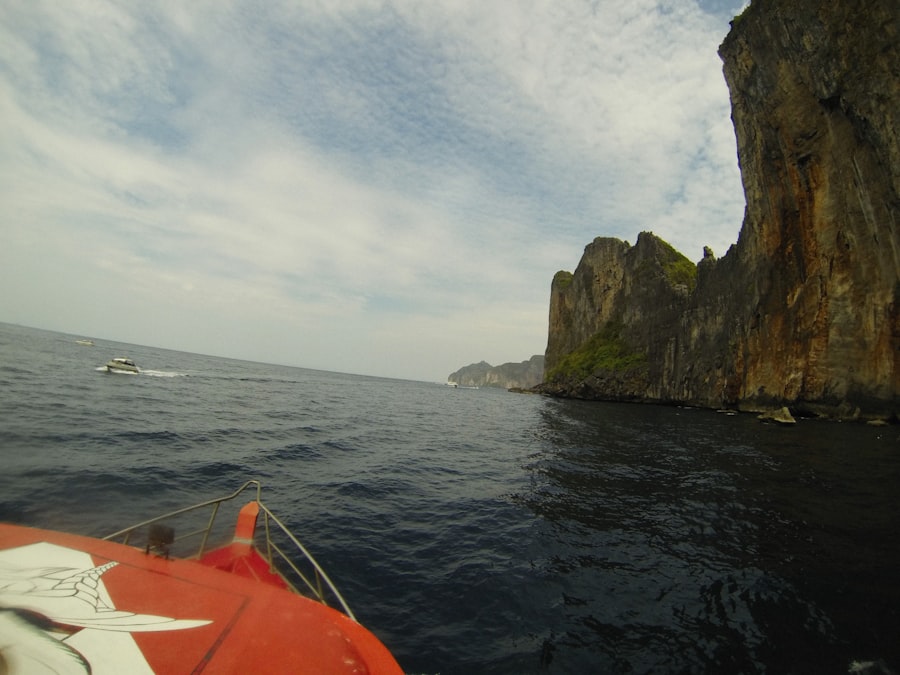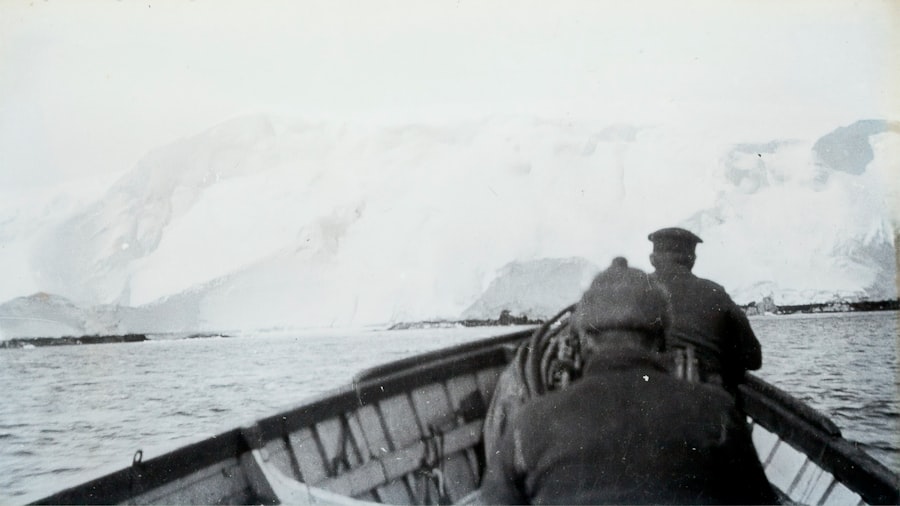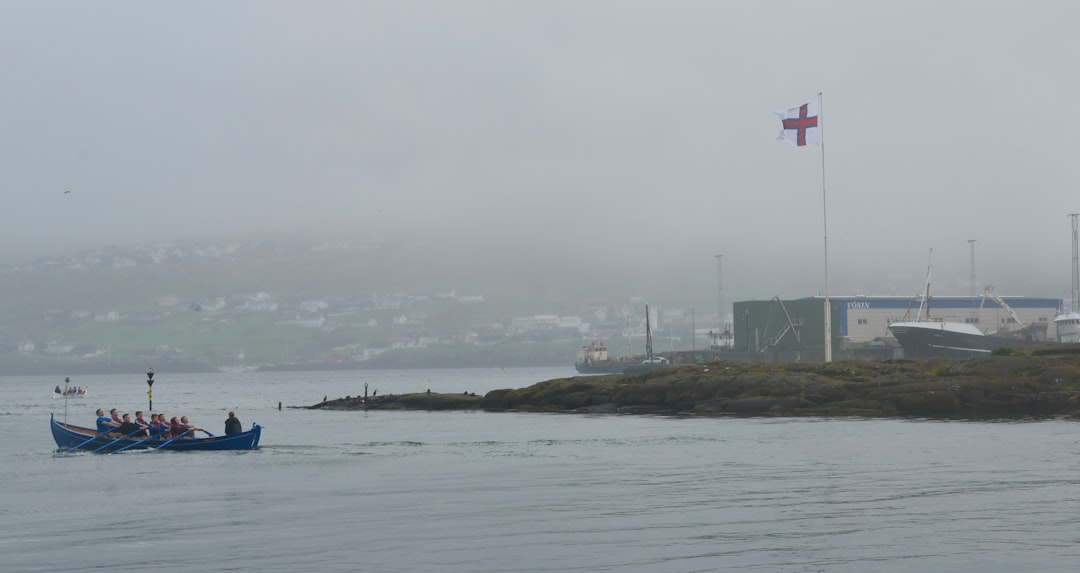The Drake Passage, a body of water that separates South America from Antarctica, is renowned for its tumultuous seas and unpredictable weather. Stretching approximately 600 kilometers (about 370 miles) between Cape Horn and the Antarctic Peninsula, this passage is often regarded as one of the most challenging maritime routes in the world. The confluence of the Atlantic and Pacific Oceans creates a unique environment where powerful currents and winds converge, resulting in rough seas that can test even the most seasoned sailors.
The passage is not only a geographical marvel but also a critical route for those seeking to explore the pristine wilderness of Antarctica. Historically, the Drake Passage has been both a barrier and a gateway for explorers, scientists, and adventurers alike. It has witnessed countless voyages, from early explorers like Ferdinand Magellan to modern-day expeditions aimed at studying climate change and wildlife.
The passage is steeped in tales of bravery and endurance, as many have faced its fierce storms and icy waters. Understanding the dynamics of the Drake Passage is essential for anyone planning to embark on a journey through this formidable stretch of ocean, as it sets the stage for the experiences that lie ahead.
Key Takeaways
- The Drake Passage is a notoriously rough stretch of water between South America and Antarctica, known for its unpredictable and intense weather conditions.
- Preparing for the crossing involves packing warm and waterproof clothing, seasickness medication, and mentally preparing for the potential challenges of the journey.
- Choosing the right vessel for the crossing is crucial, with considerations such as size, stability, and amenities playing a key role in the comfort and safety of the journey.
- Packing essentials for the journey include layers of warm clothing, waterproof gear, sturdy footwear, and personal items such as medications and camera equipment.
- Navigating seasickness can be managed with medication, acclimatization, and choosing a cabin in the middle of the ship for stability.
- Safety measures on board include following crew instructions, wearing appropriate gear, and being mindful of potential hazards such as slippery decks and rough seas.
- Wildlife spotting in the passage offers opportunities to see a variety of marine life, including whales, dolphins, and seabirds, making it essential to have binoculars and a camera ready.
- Weather and its impact on the crossing can range from calm seas to extreme storms, requiring flexibility and preparedness for potential delays or changes in itinerary.
- Staying active and entertained on the journey can involve participating in onboard activities, socializing with fellow passengers, and taking in the breathtaking scenery.
- Capturing the journey with photography tips involves using a zoom lens for wildlife, adjusting settings for low light conditions, and taking advantage of unique perspectives and moments.
- Reflecting on the experience of crossing the Drake Passage can be a profound and transformative journey, offering a sense of accomplishment and a deeper connection to the natural world.
Preparing for the Crossing
Preparation is key when it comes to crossing the Drake Passage. The unpredictable nature of the waters demands that travelers equip themselves with knowledge and resources to ensure a safe and enjoyable journey. Researching the best times to cross is crucial; typically, the summer months of November to March offer more favorable conditions.
However, even during these months, one must remain vigilant, as weather patterns can shift rapidly. Understanding the potential challenges and risks associated with the crossing can help travelers mentally prepare for what lies ahead. In addition to timing, physical preparation plays a significant role in ensuring a successful crossing.
Travelers should consider their fitness levels and any health concerns that may arise during the journey. Engaging in regular exercise leading up to the trip can help build stamina and resilience. Moreover, familiarizing oneself with the symptoms of seasickness and how to manage them can alleviate anxiety about the crossing.
By taking these proactive steps, travelers can approach their adventure with confidence and a sense of readiness.
Choosing the Right Vessel

Selecting the appropriate vessel for navigating the Drake Passage is a critical decision that can significantly impact the overall experience. Various types of ships are available, ranging from large cruise liners to smaller expedition vessels. Each option comes with its own set of advantages and disadvantages.
Larger ships may offer more amenities and stability in rough seas, while smaller vessels can provide a more intimate experience and greater access to remote areas. When choosing a vessel, travelers should consider their personal preferences and priorities. For those seeking comfort and luxury, larger cruise ships may be ideal, offering spacious cabins, fine dining, and onboard entertainment.
Conversely, adventure seekers may prefer smaller expedition ships that allow for closer encounters with wildlife and more opportunities for land excursions. Ultimately, understanding the capabilities and limitations of each type of vessel will help travelers make an informed choice that aligns with their expectations for the journey.
Packing Essentials for the Journey
| Item | Quantity | Description |
|---|---|---|
| Passport | 1 | Valid for at least 6 months |
| Clothing | Varies | Weather-appropriate and versatile |
| Toiletries | 1 set | Toothbrush, toothpaste, shampoo, etc. |
| Travel Adapter | 1 | For charging devices |
| Medications | As needed | Prescription and over-the-counter |
Packing wisely is essential for any journey, but it becomes particularly important when crossing the Drake Passage. The unpredictable weather conditions necessitate a well-thought-out packing list that includes layers of clothing suitable for both cold and wet environments. Waterproof jackets, thermal layers, and sturdy footwear are must-haves to ensure comfort while exploring both onboard and on land.
In addition to clothing, travelers should not overlook other essentials such as personal medications, sunscreen, and insect repellent. Binoculars for wildlife spotting and a good camera for capturing memories are also recommended items. It is wise to pack light but efficiently, ensuring that all necessary items are easily accessible during the crossing.
By preparing thoughtfully, travelers can focus on enjoying their adventure rather than worrying about forgotten essentials.
Navigating Seasickness
Seasickness is a common concern for many travelers embarking on a journey through the Drake Passage. The combination of rolling waves and strong winds can lead to discomfort for even those who are typically resilient at sea. Understanding how to navigate seasickness is crucial for ensuring an enjoyable experience during the crossing.
Many travelers find that taking preventive measures before setting sail can significantly reduce their chances of experiencing nausea. Over-the-counter medications such as antihistamines or prescription remedies can be effective in managing symptoms. Additionally, natural remedies like ginger or acupressure wristbands have gained popularity among those seeking alternative solutions.
Staying hydrated and consuming light meals can also help mitigate feelings of seasickness. By being proactive and prepared, travelers can increase their chances of enjoying smooth sailing through the Drake Passage.
Safety Measures on Board

Safety should always be a top priority when embarking on any maritime adventure, especially in challenging waters like the Drake Passage. Modern vessels are equipped with advanced safety features designed to protect passengers during their journey.
Participating in safety drills and paying attention to briefings provided by crew members can enhance awareness and preparedness. Travelers should also ensure they have access to life jackets and understand how to use safety equipment properly. By prioritizing safety measures and remaining vigilant throughout the journey, passengers can enjoy peace of mind while navigating the unpredictable waters of the Drake Passage.
Wildlife Spotting in the Passage
One of the most captivating aspects of crossing the Drake Passage is the opportunity to witness an array of wildlife in their natural habitat. The waters are teeming with life, from majestic whales to playful seals and a variety of seabirds soaring overhead. Travelers often find themselves enchanted by these encounters, which add an unforgettable dimension to their journey.
To maximize wildlife spotting opportunities, travelers should remain attentive and patient while on deck. Many vessels offer guided excursions led by knowledgeable naturalists who can provide insights into the behaviors and habitats of various species. Binoculars are invaluable tools for observing wildlife from a distance without disturbing them.
The thrill of spotting a breaching whale or a colony of penguins can create lasting memories that define the experience of crossing the Drake Passage.
Weather and Its Impact on the Crossing
The weather in the Drake Passage is notoriously unpredictable, with conditions capable of changing rapidly within a matter of hours. Travelers must remain adaptable and prepared for a range of weather scenarios, from calm seas to fierce storms. Understanding how weather patterns influence the crossing can help set realistic expectations for what lies ahead.
Before embarking on their journey, travelers should monitor weather forecasts closely to gain insight into expected conditions during their crossing. While summer months generally offer milder weather, it is essential to remain aware that storms can still occur unexpectedly. Being mentally prepared for potential rough seas can help travelers maintain a positive outlook throughout their journey, regardless of what Mother Nature has in store.
Staying Active and Entertained
While crossing the Drake Passage may involve periods of rough seas where outdoor activities are limited, there are still plenty of ways to stay active and entertained onboard. Many vessels offer fitness facilities or organized activities designed to keep passengers engaged during their journey. From yoga classes to dance lessons, there are opportunities for travelers to maintain their physical well-being while at sea.
In addition to physical activities, onboard entertainment options abound. Passengers can enjoy lectures from experts on topics related to Antarctica’s ecology or history, participate in trivia games, or simply relax with a good book in hand.
Capturing the Journey: Photography Tips
For many travelers, capturing memories through photography is an integral part of any adventure, especially when traversing such breathtaking landscapes as those found in the Drake Passage. To make the most of photographic opportunities during this journey, it is essential to come prepared with appropriate gear and techniques. Travelers should consider bringing a camera with manual settings to capture stunning images in varying light conditions.
A zoom lens is particularly useful for wildlife photography, allowing for close-up shots without disturbing animals in their natural habitat. Additionally, understanding basic composition techniques—such as framing subjects effectively—can elevate photographs from ordinary snapshots to stunning visual narratives that encapsulate the essence of the journey.
Reflecting on the Experience
As travelers complete their crossing of the Drake Passage, it is essential to take time to reflect on their experiences during this remarkable journey. The challenges faced along the way often lead to personal growth and newfound appreciation for nature’s beauty and power. Many find that sharing stories with fellow passengers fosters connections that last long after returning home.
Reflecting on moments spent observing wildlife or navigating rough seas can deepen one’s understanding of both nature and oneself. Journaling about these experiences or creating a photo album can serve as lasting reminders of this extraordinary adventure through one of Earth’s most awe-inspiring maritime routes. Ultimately, crossing the Drake Passage becomes not just a physical journey but also an emotional one that leaves an indelible mark on those who dare to traverse its waters.
If you’re planning an adventurous journey across the Drake Passage, you might find it helpful to explore additional resources that provide insights and tips for such an expedition. A related article that could offer valuable information is available on MyGeoQuest. This article delves into the challenges and preparations necessary for crossing this notorious stretch of water. For more details, you can visit the article by clicking on this link. This resource will equip you with the knowledge needed to tackle the Drake Passage with confidence.
WATCH NOW! Drake Passage: Earth’s Deadliest Waters Revealed
FAQs
What is the Drake Passage?
The Drake Passage is the body of water between the southern tip of South America and the northern tip of the Antarctic Peninsula. It is known for its rough seas and challenging weather conditions.
Why is crossing the Drake Passage challenging?
The Drake Passage is known for its strong winds, large waves, and unpredictable weather. It is also notorious for its rough seas, which can make crossing the passage a challenging and potentially dangerous endeavor.
What are the best times to cross the Drake Passage?
The best times to cross the Drake Passage are during the austral summer months of November to March, when the weather is relatively milder and the seas are calmer. However, even during these months, the weather can still be unpredictable.
What are the different ways to cross the Drake Passage?
There are several ways to cross the Drake Passage, including by cruise ship, expedition vessel, or research vessel. Some adventurous travelers also choose to cross the passage by kayak or sailboat, although these methods are much more challenging and require extensive experience and preparation.
What should I pack for a crossing of the Drake Passage?
It is important to pack warm, waterproof clothing, including insulated jackets, pants, gloves, and hats. It is also advisable to bring seasickness medication, as the rough seas of the Drake Passage can cause motion sickness in some travelers. Additionally, it is important to pack any necessary medications, as well as a camera to capture the stunning scenery and wildlife.
